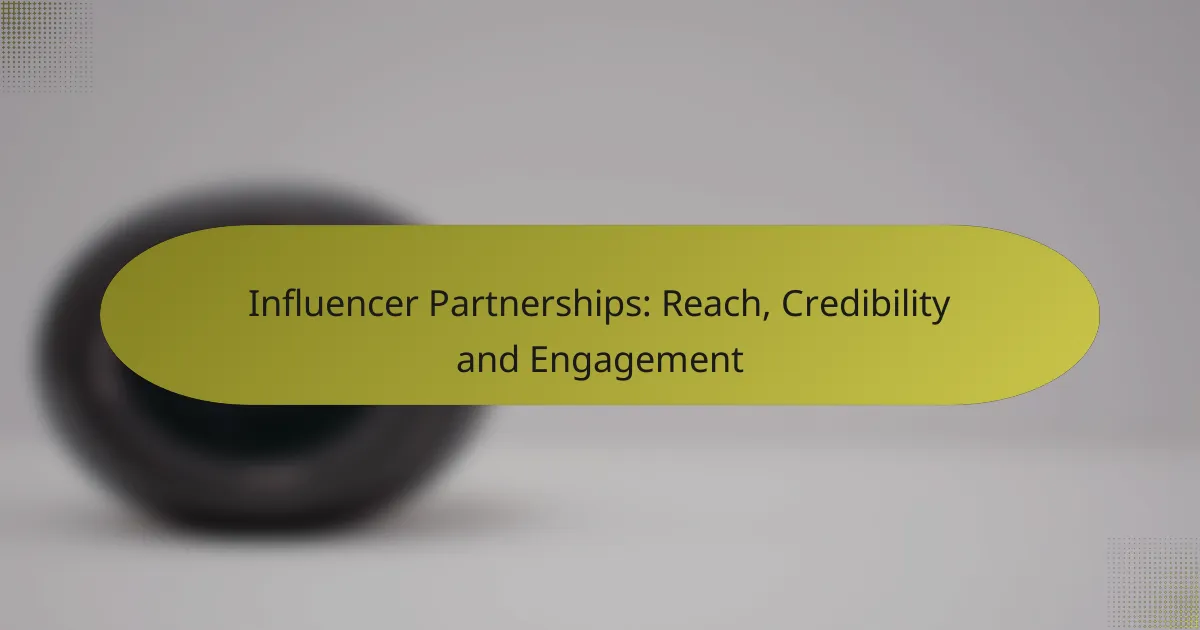Email marketing is a powerful tool for businesses looking to enhance their reach and connect directly with potential customers through targeted campaigns. By employing data-driven strategies, companies can improve engagement rates and drive conversions by creating personalized and interactive experiences that resonate with their audience.

How can email marketing increase reach in the United States?
Email marketing can significantly enhance reach in the United States by allowing businesses to connect directly with potential customers through targeted campaigns. By leveraging data-driven strategies, companies can effectively expand their audience and improve engagement rates.
Targeted audience segmentation
Targeted audience segmentation involves dividing your email list into smaller groups based on specific criteria such as demographics, interests, or purchasing behavior. This approach allows for more relevant messaging, which can lead to higher open and click-through rates.
For instance, a retailer might segment their audience by age group, sending tailored promotions to younger customers while offering different deals to older demographics. This ensures that each segment receives content that resonates with their preferences.
Personalized content strategies
Personalized content strategies enhance the effectiveness of email marketing by addressing recipients by name and tailoring messages to their past interactions. This level of personalization can increase engagement and conversion rates by making emails feel more relevant and appealing.
Using dynamic content, businesses can show different products or offers based on the recipient’s previous purchases or browsing history. For example, an online bookstore might recommend books similar to those a customer has previously bought, encouraging further purchases.
Utilizing social media integration
Integrating social media with email marketing can broaden reach by encouraging subscribers to share content with their networks. Including social sharing buttons in emails allows recipients to easily promote your brand on platforms like Facebook, Twitter, or Instagram.
Additionally, businesses can use social media to grow their email lists by promoting sign-up incentives. For example, offering exclusive discounts or content for followers who subscribe can effectively convert social media engagement into email subscribers.

What are effective engagement strategies for email marketing?
Effective engagement strategies for email marketing focus on creating personalized and interactive experiences that resonate with recipients. By incorporating elements like interactive content, automated follow-ups, and A/B testing, marketers can significantly enhance user engagement and drive conversions.
Interactive email content
Interactive email content includes elements such as polls, quizzes, and sliders that encourage recipients to engage directly within the email. This type of content can boost click-through rates and keep subscribers interested, as it transforms passive reading into an active experience.
To implement interactive elements, consider using tools that allow for easy integration of features like buttons or embedded videos. Ensure that the design is mobile-friendly, as many users access emails on their smartphones.
Automated follow-up sequences
Automated follow-up sequences are pre-scheduled emails sent based on user actions, such as signing up for a newsletter or abandoning a cart. These sequences can nurture leads by providing timely information or reminders, which can increase the likelihood of conversion.
When setting up automated sequences, segment your audience to tailor the messages according to their behavior and preferences. A common approach is to send a welcome email immediately after sign-up, followed by a series of targeted messages over the next few days or weeks.
Utilizing A/B testing
A/B testing involves sending two variations of an email to different segments of your audience to determine which performs better. This method allows marketers to optimize subject lines, content, and call-to-action buttons based on real data.
To conduct effective A/B tests, focus on one variable at a time, such as the subject line or layout. Analyze the results to identify trends and preferences, and apply the insights to future campaigns to continually improve engagement rates.

How does email marketing drive conversion rates?
Email marketing drives conversion rates by directly engaging potential customers through targeted messages that encourage specific actions. By utilizing effective strategies, businesses can significantly increase the likelihood of turning leads into paying customers.
Clear call-to-action design
A clear call-to-action (CTA) is essential for guiding recipients toward the desired outcome, such as making a purchase or signing up for a newsletter. Use contrasting colors, concise language, and prominent placement to make CTAs stand out. For example, a button labeled “Get 20% Off Now” can effectively prompt immediate action.
Ensure that the CTA is relevant to the content of the email and aligns with the overall goal of the campaign. Avoid cluttering the email with multiple CTAs, as this can confuse recipients and dilute the message.
Optimizing landing pages
Once a recipient clicks on a CTA, they should be directed to a landing page that is optimized for conversions. This means the landing page should have a consistent design and message that reflects the email content, minimizing distractions and focusing on the conversion goal.
Key elements of an optimized landing page include a compelling headline, engaging visuals, and a simple form for capturing information. Aim for a loading time of under three seconds to reduce bounce rates and keep potential customers engaged.
Incentives and discounts
Offering incentives, such as discounts or exclusive deals, can significantly enhance conversion rates. Customers are often motivated by perceived value, so presenting a limited-time offer can create urgency and encourage quicker decision-making.
Consider using tiered discounts, where the savings increase with the purchase amount, to encourage larger transactions. For example, offering 10% off for purchases over $50 and 20% off for those over $100 can effectively boost average order values.

What metrics should be tracked in email marketing campaigns?
Key metrics to track in email marketing campaigns include open rates, click-through rates, and conversion rates. Monitoring these metrics helps assess the effectiveness of your campaigns and identify areas for improvement.
Open rates
Open rates measure the percentage of recipients who open your email compared to the total number of emails delivered. A good open rate typically ranges from 15% to 25%, depending on the industry. Factors affecting open rates include subject lines, sender reputation, and timing of the email.
To improve open rates, consider A/B testing different subject lines and sending times. Avoid spammy phrases and ensure your emails are optimized for mobile devices, as many users check their emails on smartphones.
Click-through rates
Click-through rates (CTR) indicate the percentage of recipients who clicked on one or more links within your email. A typical CTR can range from 2% to 5%, but this varies by industry and audience engagement. High CTRs suggest that your content is relevant and compelling to your audience.
To enhance CTR, include clear calls to action (CTAs) and ensure your links are easily accessible. Using engaging visuals and concise text can also encourage more clicks. Regularly analyze which links perform best to refine your strategy.
Conversion rates
Conversion rates reflect the percentage of email recipients who complete a desired action, such as making a purchase or signing up for a newsletter. A strong conversion rate usually falls between 1% and 5%, depending on the campaign goals and target audience. Tracking conversions helps evaluate the overall success of your email marketing efforts.
To boost conversion rates, segment your audience for more personalized content and offers. Ensure that landing pages are optimized for user experience and that the value proposition is clear. Follow up with targeted emails to nurture leads who show interest but do not convert immediately.

What tools can enhance email marketing efforts?
Several tools can significantly improve email marketing effectiveness by automating processes, integrating customer relationship management (CRM), and providing analytics. Utilizing the right tools can streamline campaigns, enhance engagement, and ultimately boost conversions.
Mailchimp for automation
Mailchimp is a popular platform known for its automation capabilities, allowing marketers to set up email sequences triggered by user actions. This can include welcome emails, abandoned cart reminders, or re-engagement campaigns, which help maintain customer interest.
To maximize Mailchimp’s potential, segment your audience based on behavior or demographics. This enables personalized messaging, increasing the likelihood of engagement. Regularly test different subject lines and content to optimize performance.
HubSpot for CRM integration
HubSpot offers robust CRM integration that allows for seamless tracking of customer interactions across various channels. This integration helps marketers tailor their email campaigns based on customer data, improving relevance and engagement.
Utilize HubSpot’s features to create targeted lists and automate follow-ups based on user behavior. This can lead to higher conversion rates as emails are sent to the right people at the right time. Ensure your data is clean and up-to-date to maximize the effectiveness of your campaigns.
Constant Contact for analytics
Constant Contact provides comprehensive analytics tools to track the performance of your email campaigns. This includes open rates, click-through rates, and conversion metrics, which are essential for assessing effectiveness and making informed adjustments.
Regularly review your analytics to identify trends and areas for improvement. For instance, if a particular type of content consistently underperforms, consider revising your strategy. Utilize A/B testing to refine your approach and enhance overall campaign success.

What are the best practices for email list management?
Effective email list management is crucial for maximizing reach, engagement, and conversion rates. Key practices include regular list cleaning, implementing opt-in confirmation processes, and employing segmentation strategies to tailor content to specific audience segments.
Regular list cleaning
Regular list cleaning involves removing inactive or invalid email addresses from your list to maintain high deliverability rates. Aim to clean your list every few months, focusing on addresses that have not engaged with your emails over a specified period, such as six months to a year.
To clean your list effectively, consider using tools that can identify bounced emails and unsubscribes automatically. This helps ensure that your email campaigns reach engaged users, improving overall performance and reducing costs associated with sending to unresponsive addresses.
Opt-in confirmation processes
Implementing opt-in confirmation processes, such as double opt-in, ensures that subscribers genuinely want to receive your emails. This method requires users to confirm their subscription via a follow-up email, which helps to filter out those who may have signed up by mistake or without interest.
While double opt-in can initially reduce your subscriber count, it typically results in a more engaged audience. This practice can also help you comply with regulations like GDPR, which emphasize obtaining explicit consent from users before sending marketing communications.
Segmentation strategies
Segmentation strategies involve dividing your email list into smaller groups based on specific criteria, such as demographics, purchase history, or engagement levels. This allows you to tailor your messaging and offers to meet the unique needs of each segment, leading to higher engagement and conversion rates.
Common segmentation criteria include geographic location, past purchase behavior, and user preferences. By sending targeted content to each segment, you can significantly improve open rates and click-through rates, ultimately driving better results from your email marketing efforts.










